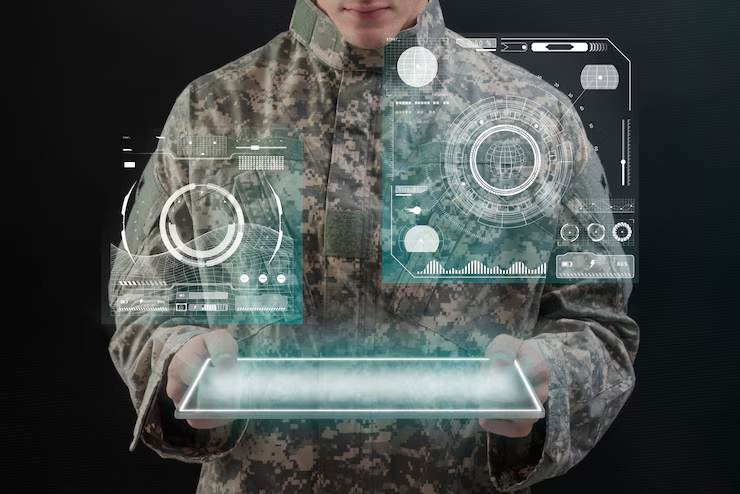The Evolution of Early Warning Systems – From Simple Alarms to AI-Powered Predictive Analytics. The first time I witnessed a modern early warning system in action was during a visit to Japan’s tsunami monitoring center. As seismic data streamed in from hundreds of offshore sensors, algorithms instantly calculated wave heights, arrival times, and at-risk populations all before the first wave had even formed. What struck me wasn’t just the technology’s sophistication, but how dramatically it contrasted with historical approaches to danger detection. This evolution from simple lookouts to intelligent prediction represents one of humanity’s most consequential technological journeys.
Ancient Vigilance: When Humans Were the Sensors
Early warning began with human perception. Mesopotamian flood warnings relied on upstream observers rushing downstream before rising waters. Chinese frontier guards lit beacon fires visible from watchtower to watchtower, capable of alerting the capital to invasion within hours an impressive feat in the pre-technological era. Medieval European cities employed bell ringers to sound alerts for fire, attack, or disease codifying different ring patterns for different threats.
These systems, while ingenious, shared fundamental limitations- they were reactive rather than predictive, limited in geographic scope, and entirely dependent on human observation and transmission.
The Industrial Revolution: Mechanizing Alert Systems
The 19th century brought mechanization to warning systems. Telegraph networks revolutionized warning speed reducing alert times from days to minutes across vast distances. By 1860, the U.S. Army Signal Corps was transmitting storm warnings to coastal communities using a network that stretched across thousands of miles. Mechanical sensors began supplementing human observers: pressure gauges triggered steam whistles, and later, electronic circuits activated bells or sirens.
These innovations represented a crucial shift: for the first time, detection could be partially automated, though interpretation and response remained firmly human domains.
Digital Transformation: The Birth of Integrated Systems
The digital revolution fundamentally reengineered early warning architecture. By the 1970s, NOAA’s weather satellites were providing continuous atmospheric monitoring, while FEMA began developing the first integrated disaster warning networks. The Global Seismographic Network, established in the 1980s, created a planet-wide nervous system for earthquake detection.
These systems introduced three revolutionary capabilities:
- Continuous monitoring across vast geographic areas
- Real-time data transmission and centralized analysis
- Rule-based automation for standard scenarios
By the early 2000s, the Indian Ocean Tsunami Warning System could detect seismic events and issue regional alerts within 10-15 minutes-impressive, but still primarily reactive rather than predictive.
The Data Explosion: From Megabytes to Petabytes
The information age exponentially expanded data collection. Modern early warning systems don’t just process more data they process fundamentally different kinds of data:
- Satellite imagery at previously unimaginable resolution and frequency
- Social media signals revealing emergent patterns in human behavior
- IoT sensor networks providing hyperlocal environmental telemetry
- Economic indicators revealing supply chain vulnerabilities
This data explosion created both opportunity and challenge. Traditional systems couldn’t process this torrent of information a typical weather forecasting center now handles over 200 terabytes of observational data daily, a 10,000-fold increase since the 1990s. Human analysts simply couldn’t keep pace, creating the perfect conditions for the next evolutionary leap.
AI Revolution: From Detection to Prediction
The integration of artificial intelligence transformed early warning from reactive detection to proactive prediction. Modern systems don’t just monitor for threshold violations; they identify subtle patterns that precede critical events.
Consider these transformative applications:
In Healthcare: AI-powered sepsis detection systems like the one at Johns Hopkins analyze over 4,000 variables from patient electronic health records, predicting septic shock up to 24 hours before onset providing critical intervention time that has reduced mortality rates by 20%.
In Climate Monitoring: Machine learning models now predict flood events 5-7 days in advance with 85% accuracy by analyzing complex interactions between rainfall patterns, soil moisture, river flow rates, and topographical data.
In Cybersecurity: Behavioral AI can identify network intrusions before data exfiltration occurs by recognizing subtle anomalies in system access patterns identifying threats that would be invisible to traditional signature-based systems.
What makes these systems revolutionary isn’t just their speed or accuracy, but their capacity to learn and improve. Unlike rule-based systems, AI-powered early warning platforms continuously refine their models based on outcomes, becoming more sensitive to subtle signals while simultaneously reducing false positives.
The Multi-Modal Integration Breakthrough
The latest evolution integrates diverse data streams into unified warning frameworks. Modern volcanic eruption prediction, for example, simultaneously processes:
- Satellite thermal imagery detecting subtle temperature changes
- Seismic data capturing microearthquakes
- Gas emission sensors monitoring chemical composition
- Ground deformation measurements from GPS arrays
- Social media reports from nearby communities
By fusing these disparate signals, AI can detect complex patterns invisible within any single data stream. This multi-modal approach has improved prediction windows for certain natural disasters by 300-400%, providing crucial extra hours or days for evacuation and preparation.
Beyond Technology: The Human Factor
For all their technical sophistication, early warning systems remain fundamentally human enterprises. Their effectiveness depends not just on detection accuracy but on communication clarity, community preparedness, and institutional response capabilities.
The 2018 Camp Fire in California offered a sobering reminder of this reality. Despite accurate fire detection and sophisticated modeling systems, evacuation alerts reached only 30% of affected residents due to infrastructure failures and communication gaps. The most powerful prediction is worthless without effective response mechanisms.
Truly effective systems integrate technical and social elements:
- Culturally appropriate communication channels
- Community education and preparation
- Clear decision authority and action protocols
- Continuous testing and feedback mechanisms
The Future: Cognitive Early Warning Systems
- Model cascading failures across critical infrastructure
- Simulate societal responses to multiply threats
- Generate adaptive response recommendations
- Learn continuously from both successes and failures
Early prototypes are already emerging in pandemic monitoring, where AI systems simultaneously track viral mutations, population movements, healthcare capacity, and supply chain vulnerabilities—providing not just alerts but comprehensive decision support.
Conclusion: From Reaction to Foresight
The evolution of early warning systems reflects humanity’s progression from reactive survival to proactive resilience. What began with watchmen scanning horizons has become an intricate digital nervous system empowered by artificial intelligence.
Yet the core purpose remains unchanged: to provide the precious gift of time to prepare, respond, and protect what matters most. As these systems grow more sophisticated, our challenge shifts from technological capability to wisdom in application. The question is no longer whether we can predict dangers, but how we’ll use that foresight to create safer, more resilient communities.
In the final analysis, the most powerful early warning system may be our collective commitment to not just survive threats, but to fundamentally reshape our relationship with risk itself.

